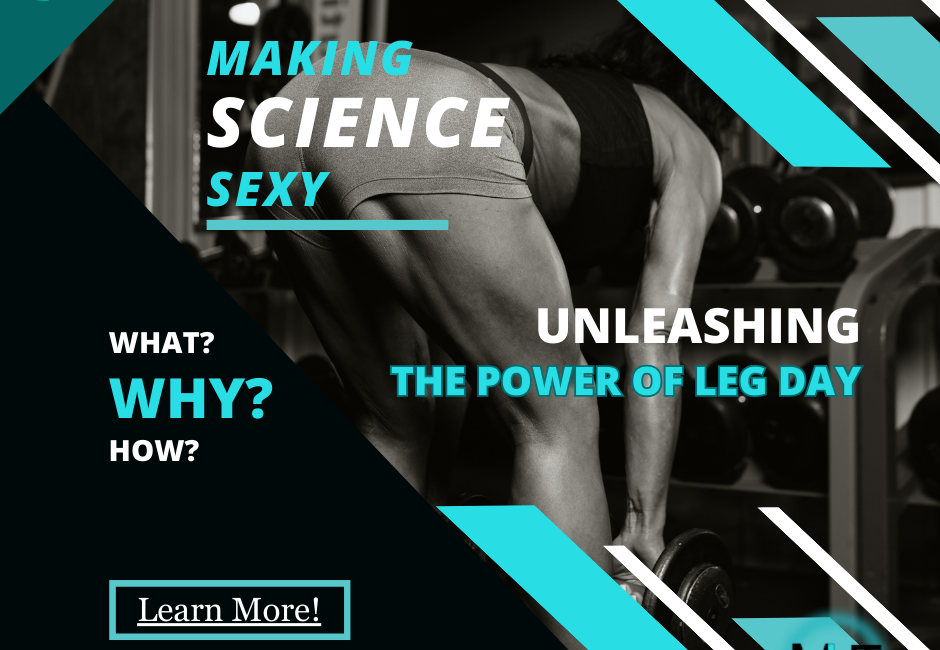Ok, ok… Science isn’t ALWAYS sexy… I get it, trust me! BUT! If you’re interested in biomechanics and physiology at all, and learning the depths of resistance training, this is the blog post for you!
Understanding the physiology of quad training is unlocking the potential of one of the most powerful muscle groups in the human body. The quadriceps, often referred to as quads, are a group of four muscles located on the front of the thigh. Comprised of the rectus femoris, vastus lateralis, vastus medialis, and vastus intermedius. These muscles play a crucial role in various daily activities, athletic performance, and overall lower body strength.
Anatomy of the Quadriceps:
To comprehend the physiology of quad training, it’s imperative to delve into the anatomy of these muscles. The rectus femoris, situated in the middle of the thigh, spans both the hip and knee joints. The vastus lateralis and vastus medialis are located on the outer and inner sides of the thigh, respectively, while the vastus intermedius lies beneath the rectus femoris. Together, these muscles contribute to knee extension and hip flexion, forming a dynamic powerhouse essential for activities like walking, running, jumping, and squatting.
Fiber Types in the Quadriceps:
Muscles are composed of different fiber types, each with unique characteristics and functions. The quadriceps predominantly consist of fast-twitch fibers (Type II), which are responsible for explosive and powerful movements. Type II fibers can be further divided into Type IIa and Type IIx, with Type IIx being the fastest and most powerful. Training strategies that target both slow-twitch (Type I) and fast-twitch fibers are crucial for maximizing overall muscle development and function.
Physiological Responses to Quadriceps Training:
- Hypertrophy:
Quadriceps training induces hypertrophy, the process of muscle growth in response to resistance training. Progressive overload, achieved by increasing the resistance or volume of training over time, stimulates muscle fibers to adapt and grow. Compound exercises such as squats, leg presses, and lunges are particularly effective in promoting quadriceps hypertrophy.
- Motor Unit Recruitment:
Motor units consist of a motor neuron and the muscle fibers it innervates. During quad training, motor units are recruited based on the principle of the size principle, where smaller, fatigue-resistant motor units are activated first, followed by larger, more fatigue-prone units. As the intensity of the exercise increases, more motor units are recruited to meet the demand, leading to enhanced muscle activation and development.
- Metabolic Stress:
Quadriceps training also induces metabolic stress, a key factor in muscle growth. This occurs as a result of the accumulation of metabolic byproducts such as lactate and hydrogen ions during high-intensity exercise. This metabolic stress triggers the release of growth-promoting hormones, including growth hormone and insulin-like growth factor-1 (IGF-1), contributing to muscle hypertrophy.
Optimizing Quad Training:
To optimize quad training, it’s essential to incorporate a well-rounded approach that includes a variety of exercises, rep ranges, and training modalities. Compound movements like squats and leg presses should be complemented with isolation exercises targeting specific regions of the quadriceps. Additionally, incorporating both heavy, low-repetition training and lighter, high-repetition training can effectively stimulate both muscle strength and endurance.
Are you thoroughly educated, stimulated, and confused yet!?
Don’t worry! This is what coaches are for!! Understanding the physiology of quad training provides a solid foundation for designing effective and targeted workout programs. By combining knowledge of muscle anatomy, fiber types, and physiological responses to training, workouts can be tailored to an athlete or clients goals to maximize quad development, strength, and functional capacity. Embracing the science behind quad training is the key to unlocking the full potential of this formidable muscle group and achieving well-rounded lower body strength.
Complete a consult request to find out more & start your fitness journey today!


